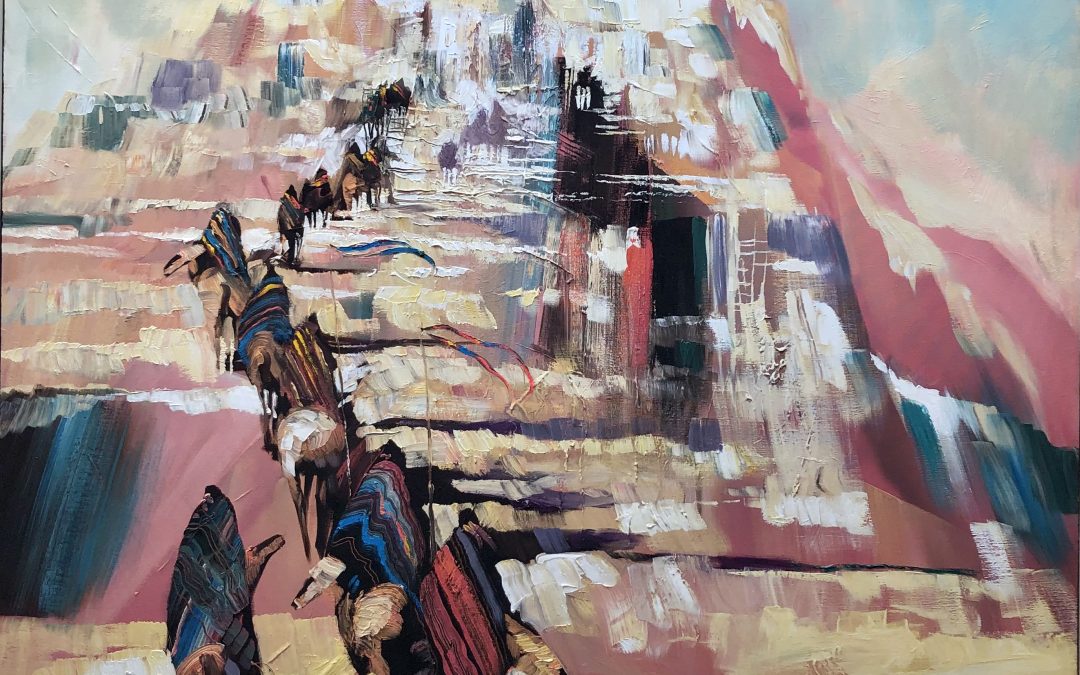Yesterday was Ash Wednesday. In the city where we live, priests and ministers were out on city streets this morning in the bitter cold offering to place ashes on the foreheads of those who wanted that for themselves.
The light in the morning sky is not bright here in late February. Here are the words said by the person who places the ashes: Remember that you are dust and to dust you shall return.
I expect that the receivers of the ashes are reminded by these actions and words that they are alive, and that whatever makes them alive is akin to fire.
The burning bush through which God confronted Moses in Exodus 3:1-4 is a sign that holy flames are not extinguished.
I wonder what we, who see ourselves as walking through Lent into what will be Easter, can find to fan the flames within us that help us walk through the end of winter, through a garden where betrayal happens, and a graveyard, in order to reach what we are hoping for. I also wonder how we can kindle holy flames in those around us who are our neighbors and families.
A large painting hangs in the stairwell leading from the front door of our home down to our studies and our recreation room. We have hung this painting in prominent places in our past four homes. We bought it in Santa Fe New Mexico when we knew we were moving from Toronto to the south-west of the US. This is the painting that receives more comments than anything else in our home. For me and my husband, this painting is a precious reminder of our hope for our participation in holy things which do not burn up.
The predominant colors in the painting of sunshine yellow and sand colored pueblo houses with air tones of pink and turquoise are reminiscent of the colors of the Sandia (‘watermelon’ in English) Mountains. At the center of the painting and moving up the mountain away from us is a single file of people on horseback. They are wearing brightly colored ponchos or what might be middle-eastern cloaks. The glorious light spreading out and over us from the pueblo-like dwelling at the top of the mountain gives the entire painting a glow that feels like glory.
The other features in the landscape going up the mountain are wonderfully open to our interpretation. The way up the mountain is steep. There is a dark shadowy strip which extends into brighter colors as it slashes across the path about one quarter of the way up the mountain. Someone told me that this could be an abyss. Perhaps the eye of the beholder of the painting sees what they need to see. Further up the path is a structure that some people have said reminds them of an open tomb. Further up still are groups of shadowy figures which may seem like groups of ancestors who are accompanying the other more brightly colored figures on their climb up the mountain. One person saw these shadowy mauve figures as possibly ‘the shining ones’ that John Bunyan, in The Pilgrim’s Progress, said could be seen by people in the higher vistas of the journey.
The artist who created this painting, which is called The Ascent, is B.C. Nowlin. Look him up on Google,–‘BC Nowlin Paintings’ and also see his website. Glimpse more of his paintings and hear him speak about his work. He says that his focus is always bright in the distance, a place he would like to view. He also says that he has always been, and he hopes that we too, are traveling for love towards a hopeful future. B.C. Nowlin is not an indigenous person. His family’s land formed the southern boundary of The Sandia Pueblo Reservation and he is steeped in both Hispanic culture and Puebloan Mysticism. He grew up in Alameda, New Mexico. He says, and I agree with him, that we are all tribal people
Look at the poem, ‘Towards Phoenix ‘ on page 10 of Poems Poemas.

Recent Comments